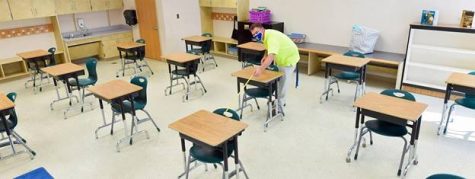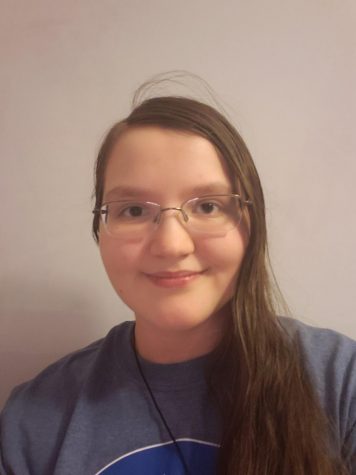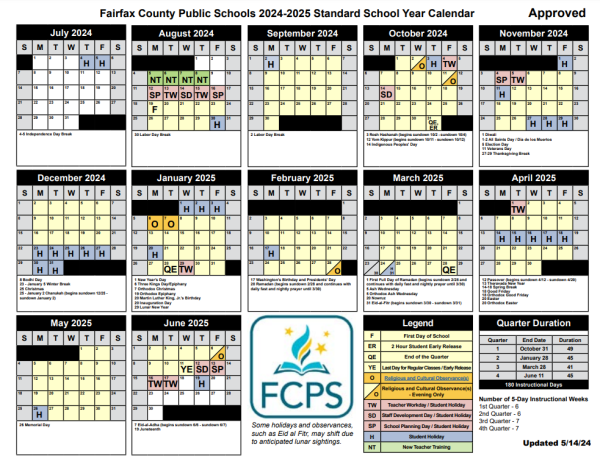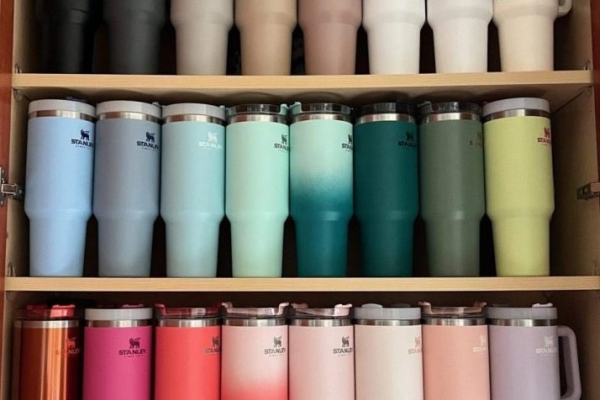BIG CHANGES AROUND THE CORNER: A TEACHER AND STUDENT PONDER HYBRID CLASSROOMS
Photo courtesy of fcps.edu
Custodians sanitize the handrails on a stairwell in a school.
After months of talks and delays, students are finally being allowed back into school buildings in Fairfax County. However, not all students will be returning, and those who are will attend in-person classes only twice a week in a hybrid system designed to mitigate risk of spreading COVID-19.
Students who remain online will only see slight changes in their schedule; the most drastic are shorter waiting times between classes and a lunchtime that’s slashed by 15 minutes. Those who signed up as hybrid students have been split into two: one group will attend in-person classes for the first half of the school week, while the other remains virtual. They will then switch roles for the other half of the school week. In-person students will have socially distanced desks in both classrooms and the cafeteria, one-way hallways, and socially distanced bus seating.
One thing they will not have is access to Blackboard Collaborate, as the school’s limited bandwidth will not allow it. Some fear that this missing component will complicate synchronicity between classroom kids and those at home. All students will still have access to Schoology and other platforms currently in use.

Ed Chapman, biology teacher at West Potomac High School, recently spent some time pondering all the practices afforded by the virtual classroom–practices he has been executing from the comfort of his home this past year–which he believes will hit the skids once schools switch to the new model. The teacher seems painfully cognizant of the model’s shortcomings. Originally, Chapman posted his list on Facebook and has agreed to allow The Watchdog to publish it.
We offer Chapman’s ponderings alongside some of my own: a list detailing what students will be able to do in in-person classrooms that cannot be done in a virtual setting.
Teacher’s Thoughts on Hybrid Classrooms
Things I will probably NOT BE ABLE to do consistently in the concurrent classroom that I am ABLE TO DO consistently in my virtual classroom:
- Know which students actually opened and attempted each assignment, started each assessment, or turned in work
- Separate my students into workgroups, monitor each group and provide targeted instruction
- Work with a student privately when they ask for help
- Create and post daily recordings of each class
- Go to the bathroom, get a drink of water, or have a snack safely
- See my students’ whole faces and hear my students’ voices
- Show my whole face and speak clearly and consistently
- Focus on instruction and engagement rather than behavior management and environmental cleaning
- Instantly text parents when a student doesn’t log in
- Confidently avoid increasing my community exposure to the coronavirus
Student’s Thoughts on Hybrid Classrooms
Things I am NOT BE ABLE to do consistently in the virtual classroom that I will be ABLE TO DO consistently in person:
- Cultivate a more natural and stronger relationship with teachers and classmates instead of with their profile pictures and text messages
- Safely and regularly interact with teachers and students in person by following social distancing protocols and having limited time within the building; this will provide an incredible morale boost and positively impact my mental health
- Learn without disruption from noisy pets and family members
- Engage more with classroom activities instead of hiding behind a screen
- Work with minimal distractions and temptations to check social media
- Get up and walk between classes instead of remaining at my desk and waiting for the next class to roll around
- Achieve engagement and focus throughout the entire class; there is no mute button in real life, and I cannot walk away from the classroom
- Thrive in a designated learning and work environment when there is no one at home due to shared living space or other factors
These lists provide only speculation, of course; there is no telling what a hybrid classroom environment will ultimately accomplish or fail to accomplish. Both teachers and students have been trudging through unknown territory in the form of virtual learning for almost a year and have struggled with various challenges. This partial return to school represents one more extremely delicate and monumental step as FCPS continues to test unchartered waters. Stay afloat, Bulldogs!






